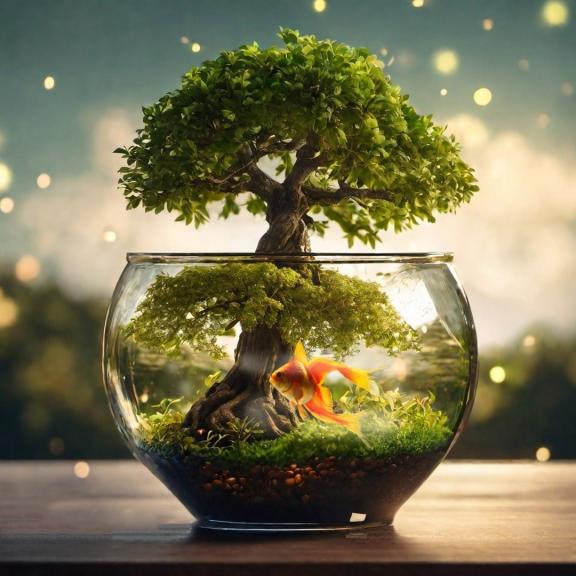A forest-fish partnership for a healthy planet
On those rare occasions fish swim into our stream of consciousness, we probably think about the gold variety in our fishbowl. Or maybe we’re reminded of the last time we dined at a seafood restaurant. Or perhaps that time we guiltily enjoyed a McDonald’s fish burger!
Seldom would the mention of fish prompt us to think about trees. Which is a pity. We know trees are important in all sorts of ways. But we probably know little about their importance to fish. Especially freshwater fish. And especially freshwater fish in those parts of the world that don't have McDonalds just around the corner.
Research tells us that freshwater fish provide food security for many tropical forest-dwelling communities. The World Fish Centre says these fish contribute more than 50 per cent of the protein intake for over 400 million people in the poorest countries of Africa and Asia. Freshwater fish are also important for livelihoods in developing countries. According to the United Nations Food and Agricultural Organization (FAO), inland fisheries add more than USD 6 billion annually to Africa's GDP.
No one would debate that freshwater fish are a resource worth protecting. But protecting fish means protecting trees. And when trees and forests enter the discussion, often the debate becomes more complicated. The pros and cons of cutting down trees have been discussed for decades. But when it comes to trees and fish, the debate is quite simple: don’t damage forests if it means damaging fish.
Here are a few reasons why.
Fish need life-giving rivers and life-giving rivers need life-giving trees. Trees protect watersheds by halting erosion, preventing excessive sediment entering rivers, smothering fish eggs and larvae, sullying the water and dumping pollutants. If you've ever owned an aquarium, you know fish are fussy about their water quality. And if you’ve ever let your fishbowl turn more green than clean, you also know your piscine pet will turn more old than gold.
High school science teachers taught us that trees absorb carbon dioxide and release oxygen through photosynthesis. Many years later, international scientists taught us this process mitigates climate change and maintains the environment's overall health, including rivers and their fish.
How do trees keep fish healthy? By dropping leaves that decompose and release nutrients into rivers, nourishing the algae and aquatic plants that fish thrive on. This is important. It's not just trees that absorb carbon. It's also thriving, healthy fish.
A study from Rutgers University revealed that fish, both fresh and salty, help to sequester 1.65 billion tons of carbon through their poop. That's about four per cent of the total carbon stored by all living organisms on Earth. So, by protecting the environment, trees store carbon and help fish do the same.
The partnership between trees and fish is a vital force. Freshwater fish impact communities and economies, while trees stand as guardians of stability. This alliance demonstrates the living, breathing link between the well-being of plants, animals and people. Preserving this balance isn't just an ecological choice. It’s a commitment to a healthier planet—at the very least, it’s a thought you and your goldfish can chew on next feeding time!
References
- The safety net role of inland fishing in the subsistence strategy of multi-active forest dwellers in southern Cameroon. Available here.
- Design and Implementation of Fishery Modules in Integrated Household Surveys in Developing Countries. Available here.
- The Value of African Fisheries. Available here.
- Fishes Contribute Roughly 1.65 Billion Tons of Carbon in Feces and Other Matter Annually. Available here.
Further reading
- Flowing together: Connecting forests, freshwater and fish through watershed-based management
- Logging tropical forests jeopardizes fisheries important for food and livelihood
- The importance of freshwater species to livelihoods in the Lake Victoria Basin
- The influence of forests on freshwater fish in the tropics: a systematic review
- The quiet love affair between fish and trees
Disclaimer: The views expressed in blogs are the author's own and do not necessarily reflect the views of the Independent Evaluation Unit of the Green Climate Fund
